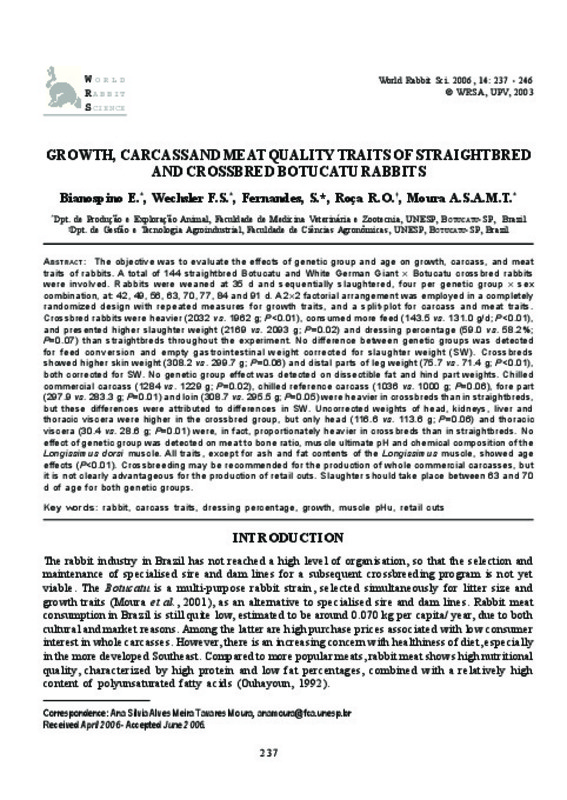JavaScript is disabled for your browser. Some features of this site may not work without it.
Buscar en RiuNet
Listar
Mi cuenta
Estadísticas
Ayuda RiuNet
Admin. UPV
Growth, carcass and meat quality traits of straightbred and crossbred botucatu rabbits
Mostrar el registro completo del ítem
Bianospino, E.; Wechsler, F.; Fernandes, S.; Roça, R.; Moura, A. (2006). Growth, carcass and meat quality traits of straightbred and crossbred botucatu rabbits. World Rabbit Science. 14(4). https://doi.org/10.4995/wrs.2006.563
Por favor, use este identificador para citar o enlazar este ítem: http://hdl.handle.net/10251/9566
Ficheros en el ítem
Metadatos del ítem
| Título: | Growth, carcass and meat quality traits of straightbred and crossbred botucatu rabbits | |
| Autor: | Bianospino, E. Wechsler, F.S. Fernandes, S. Roça, R.O. Moura, A.S.A.M.T. | |
| Fecha difusión: |
|
|
| Resumen: |
[EN] The objective was to evaluate the effects of genetic group and age on growth, carcass, and meattraits of rabbits. A total of 144 straightbred Botucatu and White German Giant x Botucatu crossbred rabbitswere involved. ...[+]
|
|
| Palabras clave: |
|
|
| Derechos de uso: | Reserva de todos los derechos | |
| Fuente: |
|
|
| DOI: |
|
|
| Editorial: |
|
|
| Versión del editor: | https://doi.org/10.4995/wrs.2006.563 | |
| Agradecimientos: |
This research received financial support from the “Fundação de Amparo à Pesquisa do Estado de São Paulo” (FAPESP), Brazil. Elaine Bianospino received a scholarship from CAPES, Brazil. The authors thank Mrs. I. F. Arruda, ...[+]
|
|
| Tipo: |
|








